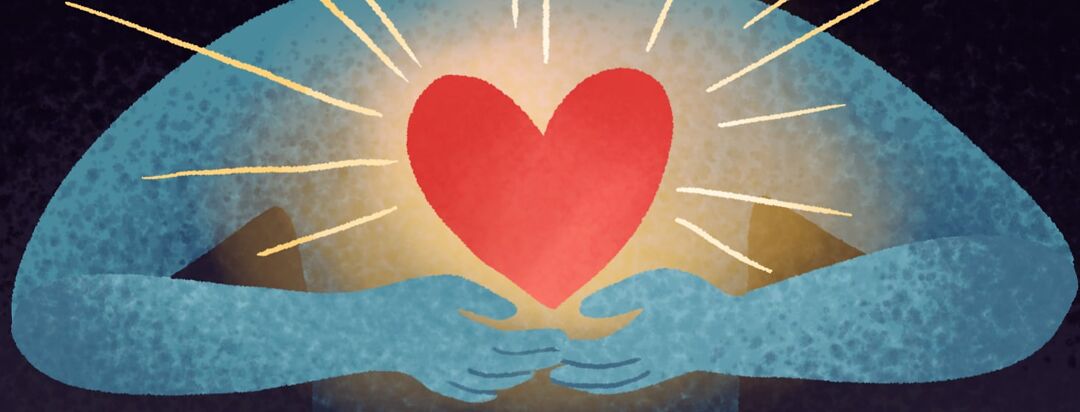Why I'm No Longer Ashamed of My HIV Belly
Over the decades, I have watched so many vibrant, young people pass away. I knew some of them, and I only saw others. Most of them disappeared and were never seen again.
I often think about one young man who worked out at the same gym I did in the mid-1990s. He was the epitome of health. He had an incredible physique, ran daily, and never missed a rep during his squats. One day, he stopped showing up, and I feared the worst until he reappeared several months later.
The emergence of lipodystrophy in the HIV era
He was still in good shape, but now a grapefruit-sized lump was on the back of his neck. I didn't know what it was and didn't know that one day I would be so familiar with the syndrome I could write it out without a spell check. He was the first person I had seen with lipodystrophy.
He seemed okay with it, always smiling and never passing on an opportunity to take his shirt off and show off his body. Then, one day, he stopped doing that, and soon, like so many other people, he vanished altogether.
We had all seen wasting syndrome, the skeletal faces staring out with deep-pocketed eyes. But this was something new. Something that came along as the first real hope for survival also arrived in the form of protease inhibitors.
Around 7 years later, I noticed something funny happening to me. My abdomen was misshapen. There was a pocket of fat where previously there had been nothing. Over the following months, it spread to the other side.
At first, I didn't think anything of it; I thought time had just begun to catch up with me. Then someone touched the back of my neck one day, asking, "What's this?"
Early observations of lipodystrophy
This condition involves changes in the distribution of fat in the body. Fat can appear around organs, on the back of the neck, and in the breasts. The condition can also involve the loss of fat in the face, arms, and legs.1
Beyond what is visible, though, lipodystrophy causes changes in your metabolic panel. This shows up as high cholesterol, which can contribute to stroke risk or heart attack. Blood sugar is affected as well, increasing glucose levels and the chance of developing diabetes.1
There is no clear-cut answer to what causes this condition. Most of the information I have read over the years points to medicines and the virus itself. While newer treatment regimens are less likely to cause it, there is still no data on the impact of long-term survival with these recent medications.
Managing lipodystrophy through diet and exercise
At about the same time that the COVID-19 epidemic was beginning, I was prescribed a self-administered daily injectable drug to treat lipodystrophy. I stayed on the regimen for about a year but abandoned it because there was no discernible change in my body.
Diet and exercise have had the most impact. A few changes in my meal planning and regular exercise helped reduce the subcutaneous fat in my torso. I avoid processed foods and try to eat only whole grains. Vegetables are present at every meal, and I long ago gave up sugary drinks.
Embracing and accepting lipodystrophy
What do you do when something is untreatable? Just like with HIV itself, lipodystrophy is still without a cure and can be a lifelong condition. So, I face it with the complete honesty and acceptance that I give to living with HIV.
I can't hide from it, and it must be a thing I consider daily. Just like I have a plan for HIV treatment and tools to remind me to take my pills, I must participate authentically in what I feed my body.
Certain foods are always on my shopping list and in my fridge. I also limit my sugar consumption and schedule my workouts a week in advance.
Controlling what I am looking at on social media has also been helpful. I know that most of the body imagery I see isn't attainable for me. I don't spend my time wishing I was something I'm not.
This or That
What do you find harder to manage?
Navigating ongoing conversations and treatment
Finally, I now make this an active conversation with my doctor. I remind them that it is a condition I have. It's unrealistic for them to remember everything about me during our short visit.
I ask if any numbers in my blood panel indicate worsening lipodystrophy syndrome. And I'm always listening for any advancement in treatment in the pipeline.
I have no regrets about the way my treatment unfolded. If this is the side effect of stopping the virus in its tracks, then so be it. But I have never let myself consider stopping my therapy because of some fat pockets. This is one of the many challenges I will face as I walk this path and wait for the cure.

Join the conversation